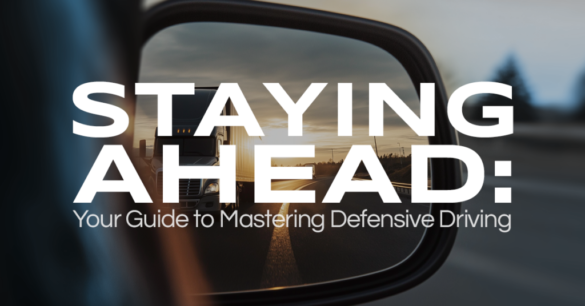Driving is a skill that demands constant adaptation. Whether you’re facing a sudden downpour, battling drowsiness on a long road trip, or navigating unpredictable traffic, proactive strategies can mean the difference between safety and disaster. In this guide, we’ll explore essential tips for handling extreme weather, staying alert behind the wheel, and practicing defensive driving to keep you and others safe.
1. Navigating Extreme Weather
Adverse weather conditions test even the most experienced drivers. Here’s how to tackle common scenarios:
A. Heavy Rain and Hydroplaning
Rain reduces visibility and creates slick roads. Hydroplaning—when tires lose contact with the road—is a major risk.
- Slow Down: Reduce speed by 5–10 mph below the limit to improve traction.
- Avoid Sudden Moves: Brake gently and steer smoothly to prevent skidding.
- Tire Check: Ensure tires have adequate tread (at least 2/32 inches) to channel water.
- Lights On: Use low beams to stay visible; avoid high beams, which glare off rain.
- Cruise Control Off: Manual speed control allows quicker reaction to changing conditions.
B. Snow and Ice
Winter driving demands preparation and patience.
- Winter Tires: Install tires with deep treads for better grip.
- Gentle Braking: Pump brakes gently (or use ABS if your car has it) to avoid sliding.
- Increase Following Distance: Triple the usual space—stopping distances can be 10x longer.
- Kit Essentials: Carry a shovel, blanket, and sand or kitty litter for traction if stuck.
C. Fog
Fog creates a disorienting “white wall” effect.
- Low Beams + Fog Lights: High beams reflect off fog, worsening visibility.
- Follow Road Markings: Use pavement lines as guides if you can’t see far ahead.
- Pull Over Safely: If visibility drops below 100 feet, exit the road and wait it out.
D. Extreme Heat
High temperatures strain engines and tires.
- Coolant Levels: Check regularly to prevent overheating.
- Tire Pressure: Heat expands air; monitor pressure to avoid blowouts.
- Hydration: Keep water in the car for passengers and emergencies.
2. Avoiding Driver Fatigue
Fatigue impairs reaction times as much as alcohol. Recognize and combat it with these steps:
A. Spot the Signs
- Heavy eyelids, frequent yawning, drifting lanes, or missed exits signal exhaustion.
- Microsleeps: Brief lapses in attention (2–3 seconds) are dangerous at high speeds.
B. Prevention Strategies
- Pre-Drive Rest: Aim for 7–9 hours of sleep before long trips.
- Take Breaks: Stop every 2 hours or 100 miles to stretch and refresh.
- Stay Engaged: Listen to podcasts or upbeat music; avoid monotonous routines.
- Share Driving: Rotate with a passenger to stay alert.
C. Smart Habits
- Avoid Heavy Meals: Large lunches can cause energy crashes.
- Caffeine Wisely: A small coffee helps temporarily, but don’t rely on it for hours.
- Cool Cabin: Lower temperatures (around 68°F) keep you more alert.
3. Mastering Defensive Driving
Defensive driving is about anticipating risks before they happen.
A. Core Principles
- 3-Second Rule: Keep a 3-second gap from the car ahead; double it in bad weather.
- Scan Ahead: Look 12–15 seconds down the road to spot hazards early.
- Mirror Checks: Glance mirrors every 5–8 seconds to monitor surroundings.
B. Anticipate the Unexpected
- Assume Others Will Err: Watch for sudden lane changes or unsignaled turns.
- Cover the Brake: Hover your foot over the brake near intersections or in heavy traffic.
- Blind Spots: Always check before merging; adjust mirrors to minimize gaps.
C. Handle Aggression Calmly
- Don’t Engage: Avoid eye contact or gestures with aggressive drivers.
- Create Space: Let tailgaters pass or change lanes.
- Road Rage Management: Practice deep breathing; pull over if emotions escalate.
Final Thoughts
Safe driving isn’t just about rules—it’s about mindfulness, preparation, and adaptability. By respecting weather challenges, prioritizing rest, and staying vigilant, you protect yourself and others on the road. Next time you buckle up, remember: every trip is a shared responsibility. Drive smart, stay patient, and keep safety in the driver’s seat.
Share these tips with fellow drivers, and drop your own strategies in the comments below! 🚗💨

